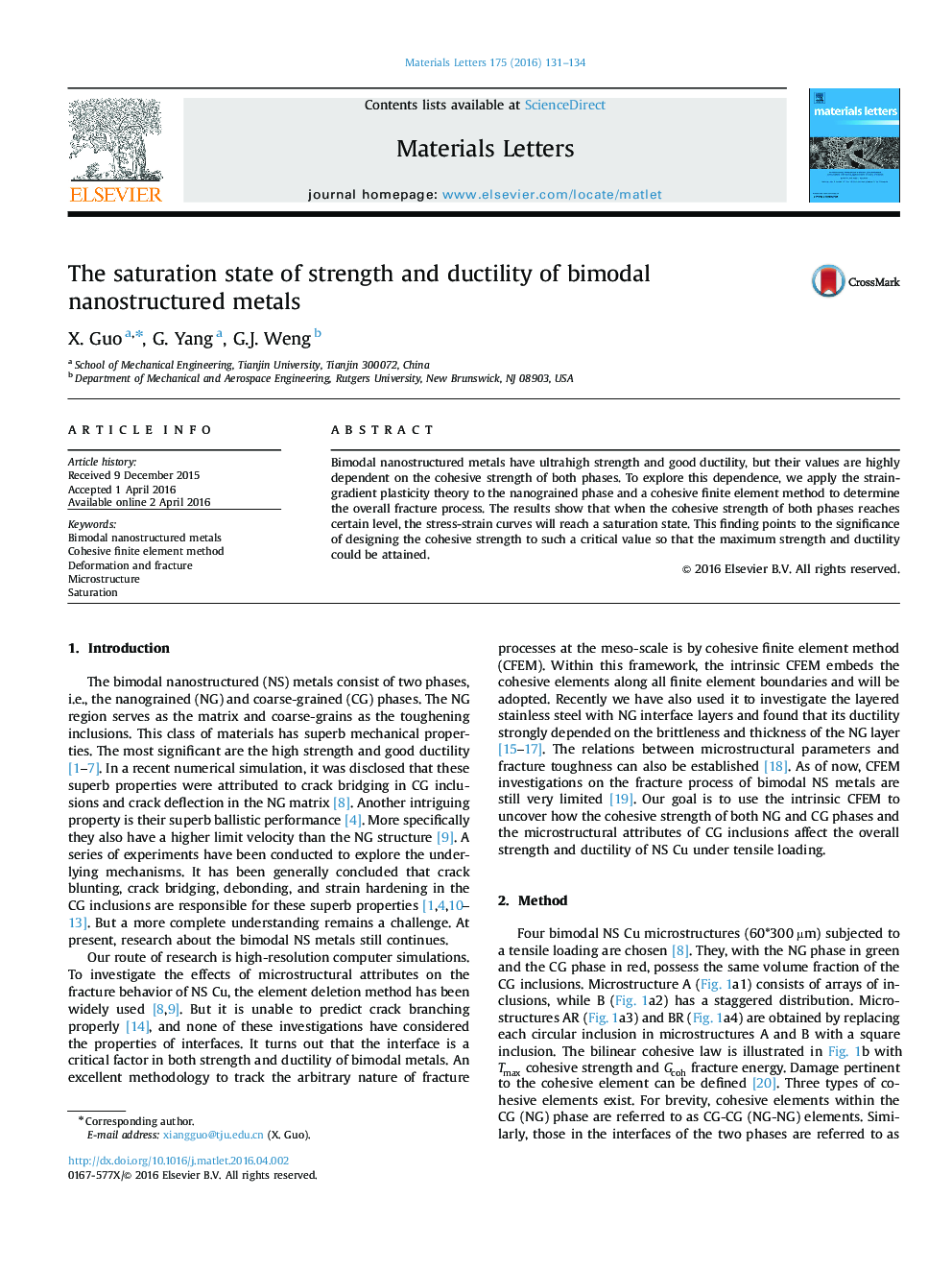| Article ID | Journal | Published Year | Pages | File Type |
|---|---|---|---|---|
| 1641268 | Materials Letters | 2016 | 4 Pages |
•Strain gradient plasticity theory is adopted to describe constitutive relation.•Cohesive finite element method is employed to study fracture of bimodal NS Cu.•Both strength and ductility will be saturated when nCG−nNG reaches certain level.•Effort must be made to bring cohesive strength of each phase to the critical level.
Bimodal nanostructured metals have ultrahigh strength and good ductility, but their values are highly dependent on the cohesive strength of both phases. To explore this dependence, we apply the strain-gradient plasticity theory to the nanograined phase and a cohesive finite element method to determine the overall fracture process. The results show that when the cohesive strength of both phases reaches certain level, the stress-strain curves will reach a saturation state. This finding points to the significance of designing the cohesive strength to such a critical value so that the maximum strength and ductility could be attained.
